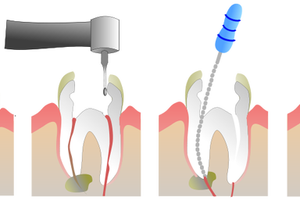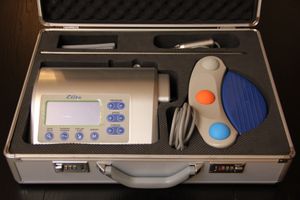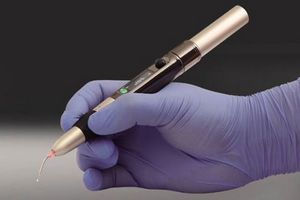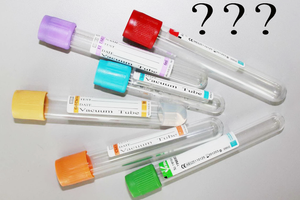How to prepare PRF-clots
This article is our intellectual property and is available for review on the terms of payment of a monetary reward in the amount of the equivalent of $ 10 (US dollars). We entrust payment control to your conscience by analogy with European principles, when, for example, a person pays in good faith for the strawberries he has picked in a foreign field.
Payment details for Ukraine:
UA093052990000026009005003772 (FOP Verveiko O.M.)
For other countries: 4441114419843634 (Vitalii Verveiko)
PAYPAL: cross-fm2@mail.ru
Each dental surgeon implatnolog must buy-BOX PRF!
Why is this so important? The top five reasons why you should use a technique PRF in dentistry:
Firstly, this is an additional service to your dental clinic that sets you apart from others. Know-how, so to speak.
Secondly, this is your extra income.
Thirdly, it is less expensive for the patient, and therefore easier to accept the patient for treatment. Income clinic will only increase due to increase in the flow of patients. After heterologous bone material is expensive and profitable only to sellers of these materials.
Fourth, not all patients are mentally prepared to agree to the use in the treatment of cadaveric bone and animal skin and the more human. And much easier to agree on the material, made from their own blood.
Oh, and fifthly, it is really effective! Your patients will be very happy if, for example, after the extraction of the tooth will have no pain, and hole heals quickly and without complications.
Many doctors want to know more, that is PRF?
PRF (Platelet Rich Fibrin) - platelet-rich fibrin is obtained from a patient's blood by centrifugation in a doctor's office. In fact, it is part of the condensed plasma devoid of red blood cells.
Where applicable PRF?
Here are some indications for the use of PRF - fibrin clots:
| - Sinus lift |
| - Augmentation of soft tissues |
| - Augmentation of bone tissue |
| - Periodontal problems |
| - Post-extraction maintaining patient |
|
- Regeneration of the gums and skin wounds |
How does it work?
Within 7 days there is a slow release of the bunch of the following substances:
| White blood cells | Stimulate progenitor cells, capable of forming new bone. Monocytes are transformed into macrophages, which enhances the stimulation of bone. |
| VEGF | Vascular endothelial growth factor (Vascular endothelial growth factor) - signaling protein produced by the cells to stimulate vasculogenesis and angiogenesis. |
| PDGF | Platelet derived growth factor (Platelet-derived growth factor) - a protein, one of many growth factors. It plays an important role in angiogenesis. |
| TGF-beta | Transforming growth factor beta (Transforming growth factor beta) - a protein that controls cell proliferation, cell differentiation, and other functions in most cells. |
| Proteins |
Plays an important role in the process of angiogenesis, stimulate tissue growth. |
| TSP |
Thrombospondin - one of the main inhibitors of angiogenesis affecting the adhesion and growth of endothelial cells. |
| IGF-1 |
Insulin-like growth factor - 1 - B family trees of the IGF |
|
BMP-2 BMP-7 |
Bone morphogenetic proteins - are capable of inducing bone growth, namely, the influence on the proliferation and differentiation of four cell types - osteoblasts (OB), osteoclast (OC), chondroblasts and chondrocytes. |
There are several main types of PRF: normal PRF, A-PRF, i-PRF and Sticky bone. It is necessary to answer the first two species are almost identical. And the last two species is also almost the same. Let us consider in more detail.
1) PRF - is the most common fibrin clot that is used in dentistry for over 15 years. Prepared in vacuum tubes with an activator of plasma - is either a plastic tube with a sprayed onto the inner walls of silicon oxide SiO, or glass vials with no additives (the glass itself is an activator of plasma). Both tubes with red cap. Sale in specialized stores of laboratory equipment. Time centrifugation approximately 8-12 minutes. The rate for our centrifuge 3000-3500 rpm.
2) A-PRF (advanced) - prepared at lower speeds, for our centrifuge is 2000-2500 rpm. Reduced speed centrifugation facilitates a more uniform distribution of growth factors in the clot and a greater concentration of these factors. Time centrifugation approximately 8-12 minutes. It is worth noting that different patients have different properties of blood, a lower speed centrifugation reduces the erythrocyte sedimentation rate. And if your patient plasma fibrin curdle before the red blood cells settle, the clot will have an admixture of unnecessary red blood cells as in this photo:

Tubes A-PRF exactly the same as for conventional PRF. I repeat exactly the same! But if you want to thank Professor Chukruna for his great contribution to the development of this theme, buy and tubes also a sign of gratitude, at least some of the tubes. Even though they are more expensive to 5 times.
3) i-PRF (injectable PRF) - Blood plasma obtained by centrifugation, which will turn into a bunch of a few minutes after centrifugation. There is no secret here. I repeat: there is no secret! We take the same test tube, or if you can get, you can take a test tube with a reinforced (double) activator. Typically such tubes with an orange cover. But is permissible to use a conventional vacuum tube and a plasma activator (red cap). Speed centrifugation to our centrifuge 1500 rev / min. Time - only 3 minutes. What is the principle of injecting PRF? Three minutes of centrifugation of the erythrocytes the top of the tube has time to settle, and the plasma top of the tube has not yet had time to thicken. That's all miracles! Taking this plasma from the tube, we get i-PRF. In its pure form this plasma thickens after 10 minutes (+/-). And if the added particulate material wettable PRF clot, the plasma rapidly thickens (about 3-5 minutes).
4) Sticky bone - it's the same i-PRF, proposed by Japanese professor even before i-prf, but with its own nuances. Japanese suggests using a plastic tube without additives. Centrifugation was performed in the same centrifuge conditions as in obtaining an ordinary PRF. The goal - to get a clean plasma, which is then also thickens due to the contained fibrin. But due to the lack of in vitro coagulation activator, the rate of thickening is much lower.
What you need to work with PRF?
Of course, in the first place, it is necessary to buy purchase centrifuge for PRF with the tubes 40 angle degrees. This centrifuge is ideal for Plasmolifting. This is what I write below.
Then need PRF-BOX. Simply put, PRF boxing - a tray push fibrin clots and conversion to fibrin membrane and fibrin plug. And also, for storing them in the box. The membranes are used to close the bone materials, Schneider membrane perforation, and traffic jams - to fill holes extracted teeth. Just PRF clots can be filled maxillary sinus sinus lift. A resultant exudate comprising proteins can be used to wet the surface of the bone implant materials (although recently this procedure is used less and less).
PRF-membrane sufficiently dense and durable, easy to handle: cut, sutured, use of tunneling technology. Working with them - a pleasure! Valid store membrane and plug in the box for 4 hours. Sterilization PRF-BOX mainly in autoclaves class B.

The next necessary device - Shovel for PRF. This is a special tool with two long working parts. This tool is laid out for easy membrane is squeezed further manipulation. Watch the video.
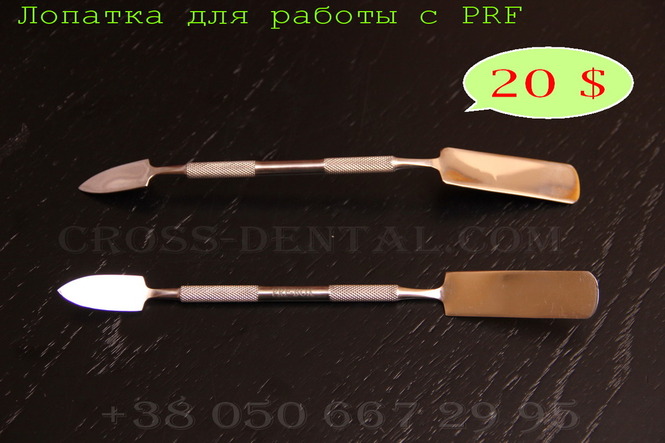
Further, bowl PRF. It is a small tray with low sides to wet graft injection PRF.

Here you can buy a set for the PRF at a very good price.
Do not interfere and scissors Castroviejo. You can buy it here.

Let's move on to the practice. Modes centrifugation our centrifuge.
| Normal PRF | 3000 rev / min, 8-12 minutes |
| SUPERFIBRIN | 500 rev / min for 30-60 minutes |
| A PRF | 2000 rev / min, 15 min |
| i-PRF | 1500 rev / min for 3 minutes |
| Sticky bone | 3000 rev / min, 5-8 minutes |
| PRP | 3000 rev / min, 8-12 minutes |
| Plasmolifting | 3000 rev / min, 5-8 minutes |
Colleagues remember! There are no magic in 2700 and 700 rev / min! The purpose of centrifugation is the erythrocyte sedimentation. This will happen at the speed of 2700 and 2800, and 3500. And if we talk about speed, it is only an indirect indicator. The main index, which takes into account - a factor g (RCF, centrifugal acceleration). The value of the centrifugal acceleration is dependent on two things: speed and radius of the rotor, ie distance from the tube to the central axis of the centrifuge. In different centrifuges different radius, and hence the rate of spin will be different. If you depart from the recommended rate of +/- 500 rpm, nothing happened! Below is a nomogram for determining the centrifugal acceleration.

Secrets of a successful outcome (for the first time publicly share)
1) Use only the vacuum tubes to reduce the rate of blood collection.
2) Upon receipt of any kind of PRF, the blood is centrifuged start no later than 1 minute after sampling each tube. For instance, two filled tubes, centrifuged set, then the following can be filled tubes. If you ignore this recommendation, the cluster size is smaller than it could be. For Plasmolifting is irrelevant.
3) Mix the blood before centrifugation in vitro:

4) If immediately after centrifugation through the tube you see that the cluster is too small, do not panic! Go dine minute 20. And when you return, the clot is perfect :) My client Taras Boychuk sometimes waiting for 40 minutes, and then ask you to Facebook: what kind of centrifuge, what speed, how many minutes of twisting what the tube? And it would not hurt to repeat hematology (physiology)! Let us briefly recall that the clotting process consists of 3 phases:
Phase 1 - the formation of blood and tissue thromboplastin
Phase 2 - the transition of prothrombin to thrombin.
Phase 3 - the formation of fibrin.
Patients are different, the speed of the processes is also different. And when doctors do not understand the mechanisms of clotting, forums, debates and appear stupid advice like, "try instead to make 2700 3200 r / min, then just turn out ...".
5) Keep left a couple of test tubes filled with alcohol. Or water, in an extreme case. They are necessary to counterbalance the spin tube, if one or an odd number. For example, in our centrifuge 6 seats centrifuge tubes best one to put into two centrifuge tubes with water / alcohol to give a triangle. This is necessary to balance the centrifuge.
This, in fact, can be completed. Although there! A couple of words about tubes Plasmolifting. "Branded" tubes are 10 times more expensive than conventional exactly the same. Here I will not even be advised to buy "branded" because special scientific contribution "author" Plasmolifting not. Why did the author in quotes? Because long before TM "Plasmolifting" practiced no different PRP-therapy technique. Abroad Plasmolifting still are called: PRP-therapy.
Thus, for test tubes. For plazmolitinga need to use tubes with sodium heparin (green cap). The separating gel is absolutely necessary! I repeat, without separating the gel! The laboratory consumables retail price is wonderful, your patients will be glad to numerous low cost procedure.
To consolidate the knowledge, take a look two themed webinar:
Thank you for attention! Your friend Vitaliy Cross :)
PS While placing the material on other sites besides cross-dental.com, a reference to the primary source is obligatory!























